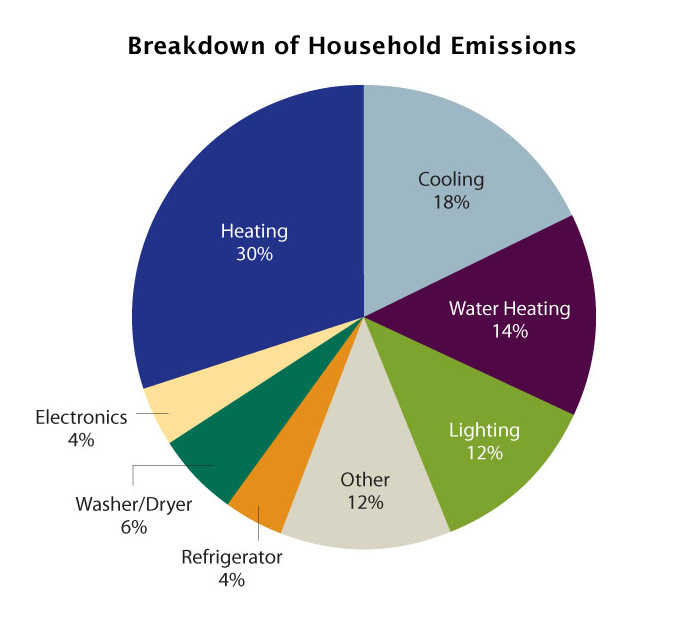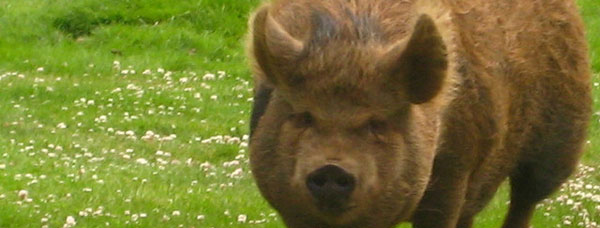My boys (ages 8 and 9) and I hunt hogs. Not the wild, porcine kind — the kind that hangs around the house while you eat, sleep, and work: Energy hogs. Electricity-using things that drive up your kilowatt-hours (and suck up the cash in your wallet) much more than they need to. A subset of those is energy vampires, things that use electricity even when they’re off.
 This is part of a series on Cooler Smarter: Practical Steps for Low-Carbon Living.
This is part of a series on Cooler Smarter: Practical Steps for Low-Carbon Living.
When we’re hunting, our weapon of choice isn’t a shotgun or spear (or stake). It’s one of those simple, low-cost plug-in meters that tell you how much electricity whatever you plug into it is drawing at that moment, and over time.
When I bought one recently, we started our hunting in the living room. And the very first thing we checked turned out to be some piece of a surround-sound system that I hadn’t used in years. And [cue dramatic music] that item, even though not in use, was on and drawing eight watts [cue screams of horror].

Some hogs are cute as the dickens. Others drive up your energy costs and global warming pollution. Hug the first, hunt down the second. Photo: Sheep purple
Okay, so eight watts may not seem like a lot. But having it on day and night was a drag. Those eight watts added up to $10 a year, meaning that pulling the plug (literally) is paying for the hog-finding meter in short order. Given all our other efforts to reduce our electricity use, it also cut our bill — and related emissions — by 1.5%. Just like that. Not bad for two minutes’ work.
Land of Opportunity (Hint: Look Up!)
And, in most houses, there’s plenty more opportunity where that came from. As with transportation and home heating and cooling, our new book Cooler Smarter lays it out for you when it comes to home electricity use: what good information can do for you, and a whole lot of what you can do about it. And, as in other areas of opportunity, with electricity it’s about saving money and reducing your contribution to climate change without sitting in the dark or eating straight out of cans (unless you want to).

After heating, cooling, and water heating, lighting is the biggest energy user -- and offers some of the lowest-hanging fruit for moving away from energy hogs.
After heating/cooling, our research showed, the biggest energy hog in most homes is lighting. I’ll admit I’m somewhat of a fanatic when it comes to light bulbs. But you certainly don’t have to be a fanatic to grab hold of what’s in the market now.
Actually, given the great savings to be had, and the wide variety available, it’s hard to find a reason not to make the switch now. As we discuss in Cooler Smarter, the electricity savings from dumping old-time incandescents for CFLs or their new, even more efficient LED brethren can add up quickly.
Upgrading can drop an average household’s annual lighting costs 75 to 88 percent, from $190 to $44 (with CFLs) or $22 (LEDs).
TV Vampires
While every home is different, other big opportunities include the fridge and that nest of electronics — DVD players, cable boxes, game consoles — many of us have in our living rooms where a humble television once stood. In the case of the electronics, sometimes how much juice they’re pulling while “off” — those vampires again — is impressive (in a bad way); some models consume more in 20 hours of non-use than they do during 4 hours on.
Taking advantage of the opportunities with some electronics can sometimes require investment (a new fridge, e.g.). In other cases, it’s as simple as plugging things into a power strip so you can put a stake through the heart of energy losses by hitting one switch to make sure “off” things are really off. Either way, you can get great paybacks in lots of situations.
Meanwhile, Back at the Ranch
Meanwhile, that surround-sound equipment? I found it plugged in again the other day (undead, indeed). Turns out my wife actually does use it, though rarely. So I’m plugging it in to the power strip behind the TV console to make sure that it’s definitely off most of the time.
And the kids and I are keeping a sharp eye out for more opportunities to cut the global warming emissions of our electricity use. Those hogs and vampires won’t know what hit ‘em.

